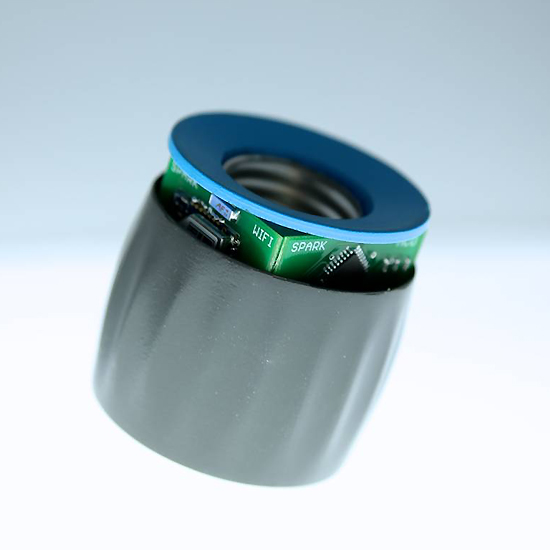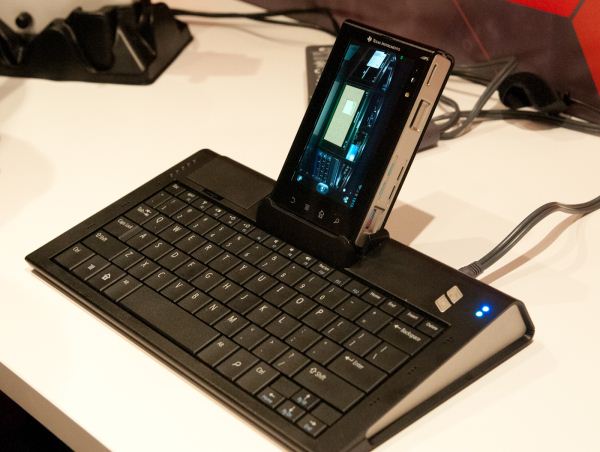Entries tagged as wifi
Related tags
automation ai artificial intelligence drone hardware innovation&society light mobile network programming robot army camera software technology virus drugs google amazon android api apple book car chrome os cloud data visualisation display glass interface internet laptop maps microsoft mirror 3d 3d printing 3d scanner ad amd ar arduino asus augmented reality chrome advertisements algorythm API art big data browser cloud computing code computer history security surveillance home automation 3g app cpu facebook flash game geolocalisation gps botnet crowd-sourcing data center data mining firefox open source app store intel law linux medical device pc satellite phone remote display tablet encryption idevices privacy protocole wireless sensor energy tracking desktop gui hybrid mouse os touch cray eye facial recognition gesture kinect mobile phone DIY power printerTuesday, June 24. 2014
New open-source router firmware opens your Wi-Fi network to strangers
ComputedBy - The idea to share a WiFi access point is far to be a new one (it is obviously as old as the technology of the WiFi access point itself), but previous solutions were not addressing many issues (including the legal ones) that this proposal seems finally to consider seriously. This may really succeed in transforming a ridiculously endless utopia in something tangible!
Now, Internet providers (including mobile networks) may have a word to say about that. Just by changing their terms of service they can just make this practice illegal... as business does not rhyme with effectiveness (yes, I know, that is strange!!...) neither with objectivity. It took some time but geographical boundaries were raised up over the Internet (which is somehow a as impressive as ridiculous achievement when you think about it), so I'm pretty sure 'they' can find a work around to make this idea not possible or put their hands over it.
Via ars technica
-----
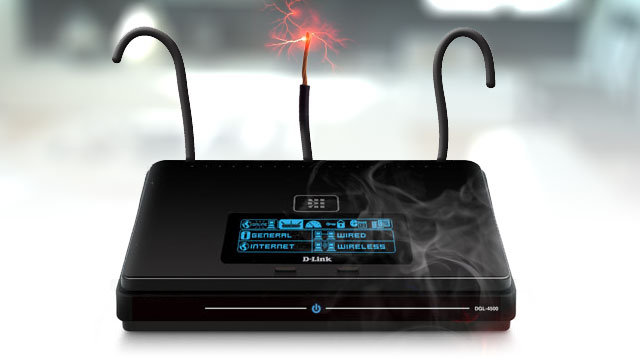
We’ve often heard security folks explain their belief that one of the best ways to protect Web privacy and security on one's home turf is to lock down one's private Wi-Fi network with a strong password. But a coalition of advocacy organizations is calling such conventional wisdom into question.
Members of the “Open Wireless Movement,” including the Electronic Frontier Foundation (EFF), Free Press, Mozilla, and Fight for the Future are advocating that we open up our Wi-Fi private networks (or at least a small slice of our available bandwidth) to strangers. They claim that such a random act of kindness can actually make us safer online while simultaneously facilitating a better allocation of finite broadband resources.
The OpenWireless.org website explains the group’s initiative. “We are aiming to build technologies that would make it easy for Internet subscribers to portion off their wireless networks for guests and the public while maintaining security, protecting privacy, and preserving quality of access," its mission statement reads. "And we are working to debunk myths (and confront truths) about open wireless while creating technologies and legal precedent to ensure it is safe, private, and legal to open your network.”
One such technology, which EFF plans to unveil at the Hackers on Planet Earth (HOPE X) conference next month, is open-sourced router firmware called Open Wireless Router. This firmware would enable individuals to share a portion of their Wi-Fi networks with anyone nearby, password-free, as Adi Kamdar, an EFF activist, told Ars on Friday.
Home network sharing tools are not new, and the EFF has been touting the benefits of open-sourcing Web connections for years, but Kamdar believes this new tool marks the second phase in the open wireless initiative. Unlike previous tools, he claims, EFF’s software will be free for all, will not require any sort of registration, and will actually make surfing the Web safer and more efficient.
Open Wi-Fi initiative members have argued that the act of providing wireless networks to others is a form of “basic politeness… like providing heat and electricity, or a hot cup of tea” to a neighbor, as security expert Bruce Schneier described it.
Walled off
Kamdar said that the new firmware utilizes smart technologies that prioritize the network owner's traffic over others', so good samaritans won't have to wait for Netflix to load because of strangers using their home networks. What's more, he said, "every connection is walled off from all other connections," so as to decrease the risk of unwanted snooping.
Additionally, EFF hopes that opening one’s Wi-Fi network will, in the long run, make it more difficult to tie an IP address to an individual.
“From a legal perspective, we have been trying to tackle this idea that law enforcement and certain bad plaintiffs have been pushing, that your IP address is tied to your identity. Your identity is not your IP address. You shouldn't be targeted by a copyright troll just because they know your IP address," said Kamdar.
This isn’t an abstract problem, either. Consider the case of the Californian who, after allowing a friend access to his home Wi-Fi network, found his home turned inside-out by police officers asking tough questions about child pornography. The man later learned that his houseguest had downloaded illicit materials, thus subjecting the homeowner to police interrogation. Should a critical mass begin to open private networks to strangers, the practice of correlating individuals with IP addresses would prove increasingly difficult and therefore might be reduced.
While the EFF firmware will initially be compatible with only one specific router, the organization would like to eventually make it compatible with other routers and even, perhaps, develop its own router. “We noticed that router software, in general, is pretty insecure and inefficient," Kamdar said. “There are a few major players in the router space. Even though various flaws have been exposed, there have not been many fixes.”
Monday, March 24. 2014
WiFi capability embedded in 68% of all consumer electronics sold in the US
Via Slash Gear
-----

Just about every electronic device that we buy today has WiFi hardware embedded inside. Our game consoles like the PS3, PS4, Xbox One, and portable devices all ship with wireless connectivity. Strategy Analytics has issued a new report that shows 68% of all consumer electronics devices sold in the US now include WiFi capability.
When the report is expanded to look at the entire world, 57% of all consumer electronics devices have WiFi embedded. There are 4 billion WiFi enabled devices in use around the world today. Breaking that down, Strategy Analytics says that is about seven WiFi equipped devices for every home.
Looking around my house, I have more devices that that with multiple smartphones, game consoles, tablets, DVRs with WiFi, and more. It’s easy to see how 4 billion WiFi devices can be in use around the world. The research firm predicts that by 2017 there will be over 7 billion WiFi devices in use globally.
The most common WiFi equipped devices on the market are mobile phones and tablets. Those two product categories account for 59% of all WiFi enabled CE devices shipped in 2013. Mobile PCs is the next biggest category accounting for 9% of WiFi devices shipped. The massive difference in percentage between mobile phones and tablets compared to mobile computers makes sense with the computer market on the decline. Key growth areas for WiFi moving forward will be in cameras, wireless audio speakers, smart TVs and DVRs according to Strategy Analytics.
Tuesday, October 22. 2013
A plan to turn every lightbulb into an ultra-fast alternative to Wi-Fi
Via Quartz
-----
Current wireless networks have a problem: The more popular they become, the slower they are. Researchers at Fudan University in Shanghai have just become the latest to demonstrate a technology that transmits data as light instead of radio waves, which gets around the congestion issue and could be ten times faster than traditional Wi-Fi.
In dense urban areas, the range within which Wi-Fi signals are transmitted is increasingly crowded with noise—mostly, other Wi-Fi signals. What’s more, the physics of electromagnetic waves sets an upper limit to the bandwidth of traditional Wi-Fi. The short version: you can only transmit so much data at a given frequency. The lower the frequency of the wave, the less it can transmit.

Li-Fi doesn’t work in the dark or outdoors, but it only has to be a supplement to existing wireless networks to be valuable.AP Photo/Kin Cheung
But what if you could transmit data using waves of much higher frequencies, and without needing a spectrum license from your country’s telecoms regulator? Light, like radio, is an electromagnetic wave, but it has about 100,000 times the frequency of a Wi-Fi signal, and nobody needs a license to make a light bulb. All you need is a way to make its brightness flicker very rapidly and accurately so it can carry a signal.
The idea sounds daft: Who would want to sit under a flickering bulb? But Li-Fi, a standard proposed just two years ago, is seeing rapid technological progress.
First, data are transmitted to an LED light bulb—it could be the one illuminating the room in which you’re sitting now. Then the lightbulb is flicked on and off very quickly, up to billions of times per second. That flicker is so fast that the human eye cannot perceive it. (For comparison, the average energy-saving compact fluorescent bulb already flickers between 10,000 and 40,000 times per second.) Then a receiver on a computer or mobile device—basically, a little camera that can see visible light—decodes that flickering into data. LED bulbs can be flicked on and off quickly enough to transmit data around ten times as fast the fastest Wi-Fi networks. (If they could be manipulated faster, the bandwidth would be even higher.)

If you’ve ever used a solar-powered calculator, you already know how to connect to Li-Fi.Oledcomm
Li-Fi has one big drawback compared to Wi-Fi: you, or rather your device, need to be within sight of the bulb. It wouldn’t necessarily need to be a special bulb; in principle, overhead lights at work or at home could be wired to the internet. But it would mean that, unlike with Wi-Fi, you couldn’t go into the next room unless there were wired bulbs there too.
However, a new generation of ultrafast Wi-Fi devices that we’re likely to start using soon face a similar limitation. They use a higher range of radio frequencies, which aren’t as crowded with other signals (at least for now), and have a higher bandwidth, but, like visible light, cannot penetrate walls.
Engineers and a handful of startups, like Oledcomm, have been experimenting with Li-Fi technology. The Fudan University team unveiled an experimental Li-Fi network in which four PCs were all connected to the same light bulb. Other researchers are working on transmitting data via different colors of LED lights—imagine, for example, transmitting different signals through each of the the red, green and blue LEDs inside a multi-colored LED light bulb.
Because of its limitations, Li-Fi won’t do away with other wireless networks. But it could supplement them in congested areas, and replace them in places where radio signals need to be kept to a minimum, like hospitals, or where they don’t work, such as underwater.Wednesday, September 04. 2013
The wireless network with a mile-wide range that the “internet of things” could be built on
Via quartz
-----

Robotics engineer Taylor Alexander needed to lift a nuclear cooling tower off its foundation using 19 high-strength steel cables, and the Android app that was supposed to accomplish it, for which he’d just paid a developer $20,000, was essentially worthless. Undaunted and on deadline—the tower needed a new foundation, and delays meant millions of dollars in losses—he re-wrote the app himself. That’s when he discovered just how hard it is to connect to sensors via the standard long-distance industrial wireless protocol, known as Zigbee.
It took him months of hacking just to create a system that could send him a single number—which represented the strain on each of the cables—from the sensors he was using. Surely, he thought, there must be a better way. And that’s when he realized that the solution to his problem would also unlock the potential of what’s known as the “internet of things” (the idea that every object we own, no matter how mundane, is connected to the internet and can be monitored and manipulated via the internet, whether it’s a toaster, a lightbulb or your car).
The result is an in-the-works project called Flutter. It’s what Taylor calls a “second network”—an alternative to Wi-Fi that can cover 100 times as great an area, with a range of 3,200 feet, using relatively little power, and is either the future of the way that all our connected devices will talk to each other or a reasonable prototype for it.

“We have Wi-Fi in our homes, but it’s not a good network for our things,” says Taylor. Wi-Fi was designed for applications that require fast connections, like streaming video, but it’s vulnerable to interference and has a limited range—often, not enough even to cover an entire house.
For applications with a very limited range—for example anything on your body that you might want to connect with your smartphone—Bluetooth, the wireless protocol used by keyboards and smart watches, is good enough. For industrial applications, the Zigbee standard has been in use for at least a decade. But there are two problems with Zigbee: the first is that, as Alexander discovered, it’s difficult to use. The second is that the Zigbee devices are not open source, which makes them difficult to integrate with the sort of projects that hardware startups might want to create.
Flutter’s nearest competitors, Spark Core and Electric Imp, both use Wi-Fi, which limits their usability to home-bound projects like adding your eggs to the internet of things and klaxons that tell you when your favorite Canadian hockey team has scored a goal.
Flutter’s other differentiator is cost; a Flutter radio costs just $20,
which still allows Taylor a healthy margin above the $6 in parts that
comprise the Flutter.
Making Flutter cheap means that hobbyists can connect that many more devices—say, all the lights in a room, or temperature and moisture sensors in a greenhouse. No one is quite sure what the internet of things will lead to because the enabling technologies, including cheap wireless radios like Flutter, have yet to become widespread. The present day internet of things is a bit like where personal computers were around the time Steve Wozniak and Steve Jobs were showing off their Apple I at the Palo Alto home-brew computer club: It’s mostly hobbyists, with a few big corporations sniffing around the periphery.

“I think the internet of things is not going to start with products, but projects,” says Taylor. His goal is to use the current crowd-funding effort for Flutter to pay for the coding of the software protocol that will run Flutter, since the microchips it uses are already available from manufacturers. The resulting software will allow Flutter to create a “mesh network,” which would allow individual Flutter radios to re-transmit data from any other Flutter radio that’s in range, potentially giving hobbyists or startups the ability to cover whole cities with networks of Flutter radios and their attached sensors.
Tuesday, March 05. 2013
Google Spectrum Database hits public FCC trial
Via Slash Gear
-----
Google will be conducting a 45-day public trial with the FCC to create a centralized database containing information on free spectrum. The Google Spectrum Database will analyze TV white spaces, which are unused spectrum between TV stations, that can open many doors for possible wireless spectrum expansion in the future. By unlocking these white spaces, wireless providers will be able to provide more coverage in places that need it.

The public trial brings Google one step closer to becoming a certified database administrator for white spaces. Currently the only database administrators are Spectrum Bridge, Inc. and Telcordia Technologies, Inc. Many other companies are applying to be certified, including a big dog like Microsoft. With companies like Google and Microsoft becoming certified, discovery of white spaces should increase monumentally.
Google’s trial allows all industry stakeholders, including broadcasters, cable, wireless microphone users, and licensed spectrum holders, to provide feedback to the Google Spectrum Database. It also allows anyone to track how much TV white space is available in their given area. This entire process is known as dynamic spectrum sharing.
Google’s trial, as well as the collective help of all the other spectrum data administrators, will help unlock more wireless spectrum. It’s a necessity as there is an increasing number of people who are wirelessly connecting to the internet via smartphones, laptops, tablets, and other wireless devices. This trial will open new doors to more wireless coverage (especially in dead zones), Wi-Fi hotspots, and other “wireless technologies”.
Wednesday, December 12. 2012
Why the world is arguing over who runs the internet
Via NewScientist
-----
The ethos of freedom from control that underpins the web is facing its first serious test, says Wendy M. Grossman
WHO runs the internet? For the past 30 years, pretty much no one. Some governments might call this a bug, but to the engineers who designed the protocols, standards, naming and numbering systems of the internet, it's a feature.
The goal was to build a network that could withstand damage and would enable the sharing of information. In that, they clearly succeeded - hence the oft-repeated line from John Gilmore, founder of digital rights group Electronic Frontier Foundation: "The internet interprets censorship as damage and routes around it." These pioneers also created a robust platform on which a guy in a dorm room could build a business that serves a billion people.
But perhaps not for much longer. This week, 2000 people have gathered for the World Conference on International Telecommunications (WCIT) in Dubai in the United Arab Emirates to discuss, in part, whether they should be in charge.
The stated goal of the Dubai meeting is to update the obscure International Telecommunications Regulations (ITRs), last revised in 1988. These relate to the way international telecom providers operate. In charge of this process is the International Telecommunications Union (ITU), an agency set up in 1865 with the advent of the telegraph. Its $200 million annual budget is mainly funded by membership fees from 193 countries and about 700 companies. Civil society groups are only represented if their governments choose to include them in their delegations. Some do, some don't. This is part of the controversy: the WCIT is effectively a closed shop.
Vinton Cerf, Google's chief internet evangelist and co-inventor of the TCP/IP internet protocols, wrote in May that decisions in Dubai "have the potential to put government handcuffs on the net".
The need to update the ITRs isn't surprising. Consider what has happened since 1988: the internet, Wi-Fi, broadband, successive generations of mobile telephony, international data centres, cloud computing. In 1988, there were a handful of telephone companies - now there are thousands of relevant providers.
Controversy surrounding the WCIT gathering has been building for months. In May, 30 digital and human rights organisations from all over the world wrote to the ITU with three demands: first, that it publicly release all preparatory documents and proposals; second, that it open the process to civil society; and third that it ask member states to solicit input from all interested groups at national level. In June, two academics at George Mason University in Virginia - Jerry Brito and Eli Dourado - set up the WCITLeaks site, soliciting copies of the WCIT documents and posting those they received. There were still gaps in late November when .nxt, a consultancy firm and ITU member, broke ranks and posted the lot on its own site.
The issue entered the mainstream when Greenpeace and the International Trade Union Confederation (ITUC) launched the Stop the Net Grab campaign, demanding that the WCIT be opened up to outsiders. At the launch of the campaign on 12 November, Sharan Burrow, general secretary of the ITUC, pledged to fight for as long it took to ensure an open debate on whether regulation was necessary. "We will stay the distance," she said.
This marks the first time that such large, experienced, international campaigners, whose primary work has nothing to do with the internet, have sought to protect its freedoms. This shows how fundamental a technology the internet has become.
A week later, the European parliament passed a resolution stating that the ITU was "not the appropriate body to assert regulatory authority over either internet governance or internet traffic flows", opposing any efforts to extend the ITU's scope and insisting that its human rights principles took precedence. The US has always argued against regulation.
Efforts by ITU secretary general Hamadoun Touré to spread calm have largely failed. In October, he argued that extending the internet to the two-thirds of the world currently without access required the UN's leadership. Elsewhere, he has repeatedly claimed that the more radical proposals on the table in Dubai would not be passed because they would require consensus.
These proposals raise two key fears for digital rights campaigners. The first concerns censorship and surveillance: some nations, such as Russia, favour regulation as a way to control or monitor content transiting their networks.
The second is financial. Traditional international calls attract settlement fees, which are paid by the operator in the originating country to the operator in the terminating country for completing the call. On the internet, everyone simply pays for their part of the network, and ISPs do not charge to carry each other's traffic. These arrangements underpin network neutrality, the principle that all packets are delivered equally on a "best efforts" basis. Regulation to bring in settlement costs would end today's free-for-all, in which anyone may set up a site without permission. Small wonder that Google is one of the most vocal anti-WCIT campaigners.
How worried should we be? Well, the ITU cannot enforce its decisions, but, as was pointed out at the Stop the Net Grab launch, the system is so thoroughly interconnected that there is plenty of scope for damage if a few countries decide to adopt any new regulatory measures.
This is why so many people want to be represented in a dull, lengthy process run by an organisation that may be outdated to revise regulations that can be safely ignored. If you're not in the room you can't stop the bad stuff.
Wendy M. Grossman is a science writer and the author of net.wars (NYU Press)
Tuesday, November 27. 2012
Smart light socket lets you control any ordinary light via Wi-Fi
Via DVICE
-----
Internet-connected devices are clearly the future of controlling everything from your home to your car, but actually getting "the Internet of things" rolling has been slow going. Now a new project looks to brighten those prospects, quite literally, with a smart light socket.
Created by Zach Supalla (who was inspired by his father, who is deaf and uses lights for notifications), the Spark Socket lets you to connect the light sockets in your home to the Internet, allowing them to be controlled via PC, smartphone and tablet (iOS and Android are both supported) through a Wi-Fi connection. What makes this device so compelling is its simplicity. By simply screwing a normal light bulb into the Spark Socket, connected to a standard light fixture, you can quickly begin controlling and programming the lights in your home.
Some of the uses for the Spark Socket include allowing you to have your house lights flash when you receive a text or email, programming lights to turn on with certain alarms, and having lights dim during certain times of the day. A very cool demonstration of how the device works can be tested by simply visiting this live Ustream page and tweeting #hellospark. We tested it and the light flashed on instantly as soon as we tweeted the hashtag.
The device is currently on Kickstarter, inching closer toward its $250,000 goal, and if successful will retail for $60 per unit. You can watch Supalla offer a more detailed description of the product and how it came to be in the video below.
Wednesday, October 24. 2012
Wi-Fi LED Light Bulbs: Gateway to the Smart Home?
-----
In the future, we’re told, homes will be filled with smart gadgets connected to the Internet, giving us remote control of our homes and making the grid smarter. Wireless thermostats and now lighting appear to be leading the way.
Startup Greenwave Reality today announced that its wireless LED lighting kit is available in the U.S., although not through retail sales channels. The company, headed by former consumer electronics executives, plans to sell the set, which includes four 40-watt-equivalent bulbs and a smartphone application, through utilities and lighting companies for about $200, according to CEO Greg Memo.
The Connected Lighting Solution includes four EnergyStar-rated LED light bulbs, a gateway box that connects to a home router, and a remote control. Customers also download a smartphone or tablet app that lets people turn lights on or off, dim lights, or set up schedules.
Installation is extremely easy. Greenwave Reality sent me a set to try out, and I had it operating within a few minutes. The bulbs each have their own IP address and are paired with the gateway out of the box, so there’s no need to configure the bulbs, which communicate over the home wireless network or over the Internet for remote access.
Using the app is fun, if only for the novelty. When’s the last time you used your iPhone to turn off the lights downstairs? It also lets people put lights on a schedule (they can be used outside in a sheltered area but not exposed directly to water) or set custom scenes. For instance, Memo set some of the wireless bulbs in his kitchen to be at half dimness during the day.
Many smart-home or smart-building advocates say that lighting is the toehold for a house full of networked gadgets. “The thing about lighting is that it’s a lot more personal than appliances or a thermostat. It’s actually something that affects people’s moods and comfort,” Memo says. “We think this will move the needle on the automated home.”
Rather than sell directly to consumers, as most other smart lighting products are, Greenwave Reality intends to sell through utilities and service companies. While gadget-oriented consumers may be attracted to wireless light bulbs, utilities are interested in energy savings. And because these lights are connected to the Internet, energy savings can be quantified.
In Europe and many states, utilities are required to spend money on customer efficiency programs, such as rebates for efficient appliances or subsidizing compact fluorescent bulbs. But unlike traditional CFLs, network-connected LEDs can report usage information. That allows Greenwave Reality to see how many bulbs are actually in use and verify the intended energy savings of, for example, subsidized light bulbs. (The reported data would be anonymized, Memo says.) Utilities could also make lighting part of demand response programs to lower power during peak times.
As for performance of the bulbs, there is essentially no latency when using the smartphone app. The remote control essentially brings dimmers to fixtures that don’t have them already.
For people who like the idea of bringing the Internet of things to their home with smart gadgets, LED lights (and thermostats) seem like a good way to start. But in the end, it may be the energy savings of better managed and more efficient light bulbs that will give wireless lighting a broader appeal.
Tuesday, March 27. 2012
TI Demos OMAP5 WiFi Display Mirroring on Development Platform
Via AnandTech
-----
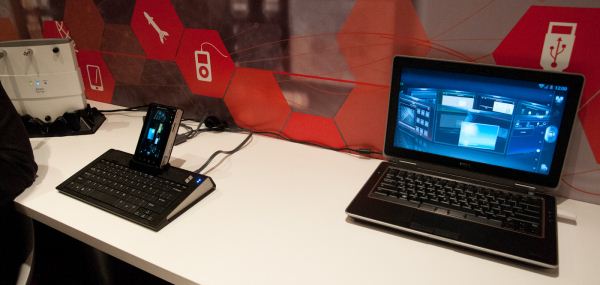
On our last day at MWC 2012, TI pulled me aside for a private demonstration of WiFi Display functionality they had only just recently finalized working on their OMAP 5 development platform. The demo showed WiFi Display mirroring working between the development device’s 720p display and an adjacent notebook which was being used as the WiFi Display sink.
TI emphasized that what’s different about their WiFi Display implementation is that it works using the display framebuffer natively and not a memory copy which would introduce delay and take up space. In addition, the encoder being used is the IVA-HD accelerator doing the WiFi Display specification’s mandatory H.264 baseline Level 3.1 encode, not a software encoder running on the application processor. The demo was running mirroring the development tablet’s 720p display, but TI says they could easily do 1080p as well, but would require a 1080p framebuffer to snoop on the host device. Latency between the development platform and display sink was just 15ms - essentially one frame at 60 Hz.
The demonstration worked live over the air at TI’s MWC booth and also used a WiLink 8 series WLAN combo chip. There was some stuttering, however this is understandable given the fact that this demo was using TCP (live implementations will use UDP) and of course just how crowded 2.4 and 5 GHz spectrum is at these conferences. In addition, TI collaborated with Screenovate for their application development and WiFi Display optimization secret sauce, which I’m guessing has to do with adaptive bitrate or possibly more.
Enabling higher than 480p software encoded WiFi Display is just one more obvious piece of the puzzle which will eventually enable smartphones and tablets to obviate standalone streaming devices.
-----
Personal Comment:
Kind of obvious and interesting step forward as it is more and more requested by mobile devices users to be able to beam or 'to TV' mobile device's screens... which should lead to transform any (mobile) device in a full-duplex video broadcasting enabled device (user interaction included!) ... and one may then succeed in getting rid of some cables in the same sitting?!
Wednesday, March 21. 2012
World’s First Flying File-Sharing Drones in Action
Via TorrentFreak
-----
A few days ago The Pirate Bay announced that in future parts of its site could be hosted on GPS controlled drones. To many this may have sounded like a joke, but in fact these pirate drones already exist. Project “Electronic Countermeasures” has built a swarm of five fully operational drones which prove that an “aerial Napster” or an “airborne Pirate Bay” is not as futuristic as it sounds.
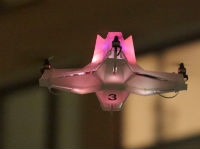 In an ever-continuing effort to thwart censorship, The Pirate Bay plans to turn flying drones into mobile hosting locations.
In an ever-continuing effort to thwart censorship, The Pirate Bay plans to turn flying drones into mobile hosting locations.
“Everyone knows WHAT TPB is. Now they’re going to have to think about WHERE TPB is,” The Pirate Bay team told TorrentFreak last Sunday, announcing their drone project.
Liam Young, co-founder of Tomorrow’s Thoughts Today, was amazed to read the announcement, not so much because of the technology, because his group has already built a swarm of file-sharing drones.
“I thought hold on, we are already doing that,” Young told TorrentFreak.
Their starting point for project “Electronic Countermeasures” was to create something akin to an ‘aerial Napster’ or ‘airborne Pirate Bay’, but it became much more than that.
“Part nomadic infrastructure and part robotic swarm, we have rebuilt and programmed the drones to broadcast their own local Wi-Fi network as a form of aerial Napster. They swarm into formation, broadcasting their pirate network, and then disperse, escaping detection, only to reform elsewhere,” says the group describing their creation.
File-Sharing Drone in Action (photo by Claus Langer)
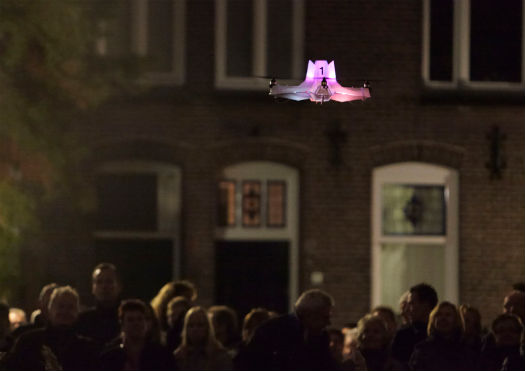
In short the system allows the public to share data with the help of flying drones. Much like the Pirate Box, but one that flies autonomously over the city.
“The public can upload files, photos and share data with one another as the drones float above the significant public spaces of the city. The swarm becomes a pirate broadcast network, a mobile infrastructure that passers-by can interact with,” the creators explain.
One major difference compared to more traditional file-sharing hubs is that it requires a hefty investment. Each of the drones costs 1500 euros to build. Not a big surprise, considering the hardware that’s needed to keep these pirate hubs in the air.
“Each one is powered by 2x 2200mAh LiPo batteries. The lift is provided by 4x Roxxy Brushless Motors that run off a GPS flight control board. Also on deck are altitude sensors and gyros that keep the flight stable. They all talk to a master control system through XBee wireless modules,” Young told TorrentFreak.
“These all sit on a 10mm x 10mm aluminum frame and are wrapped in a vacuum formed aerodynamic cowling. The network is broadcast using various different hardware setups ranging from Linux gumstick modules, wireless routers and USB sticks for file storage.”
For Young and his crew this is just the beginning. With proper financial support they hope to build more drones and increase the range they can cover.
“We are planning on scaling up the system by increasing broadcast range and building more drones for the flock. We are also building in other systems like autonomous battery change bases. We are looking for funding and backers to assist us in scaling up the system,” he told us.
Those who see the drones in action (video below) will notice that they’re not just practical. The creative and artistic background of the group shines through, with the choreography performed by the drones perhaps even more stunning than the sharing component.
“When the audience interacts with the drones they glow with vibrant colors, they break formation, they are called over and their flight pattern becomes more dramatic and expressive,” the group explains.
Besides the artistic value, the drones can also have other use cases than being a “pirate hub.” For example, they can serve as peer-to-peer communications support for protesters and activists in regions where Internet access is censored.
Either way, whether it’s Hollywood or a dictator, there will always be groups that have a reason to shoot the machines down. But let’s be honest, who would dare to destroy such a beautiful piece of art?
Electronic Countermeasures @ GLOW Festival NL 2011 from liam young on Vimeo.
Quicksearch
Popular Entries
- The great Ars Android interface shootout (130708)
- Norton cyber crime study offers striking revenue loss statistics (101061)
- MeCam $49 flying camera concept follows you around, streams video to your phone (99715)
- Norton cyber crime study offers striking revenue loss statistics (57290)
- The PC inside your phone: A guide to the system-on-a-chip (57014)
Categories
Show tagged entries
Syndicate This Blog
Calendar
|
|
December '25 | |||||
| Mon | Tue | Wed | Thu | Fri | Sat | Sun |
| 1 | 2 | 3 | 4 | 5 | 6 | 7 |
| 8 | 9 | 10 | 11 | 12 | 13 | 14 |
| 15 | 16 | 17 | 18 | 19 | 20 | 21 |
| 22 | 23 | 24 | 25 | 26 | 27 | 28 |
| 29 | 30 | 31 | ||||
